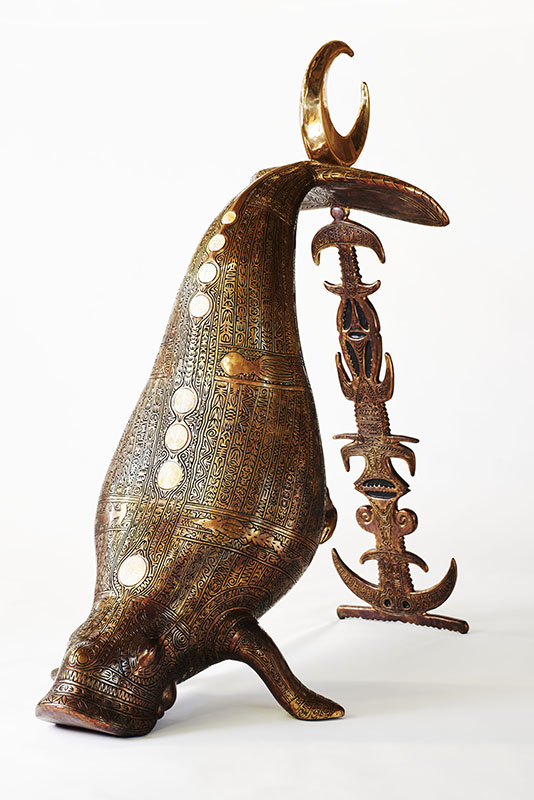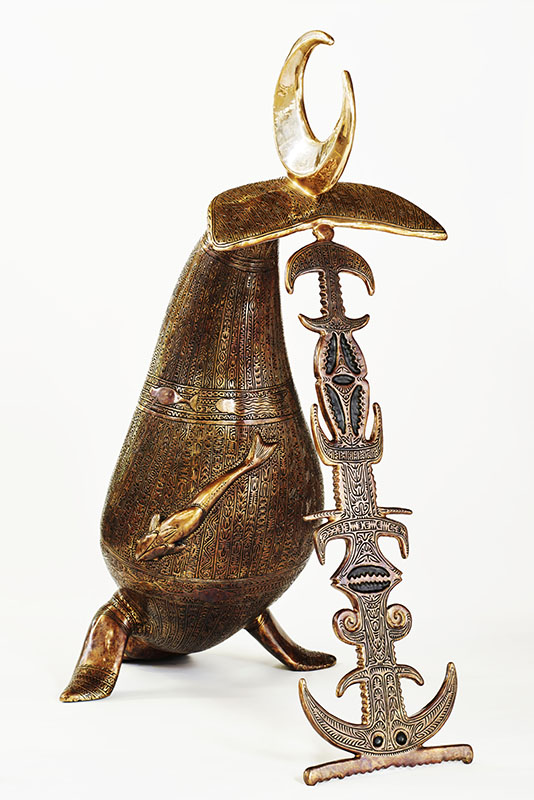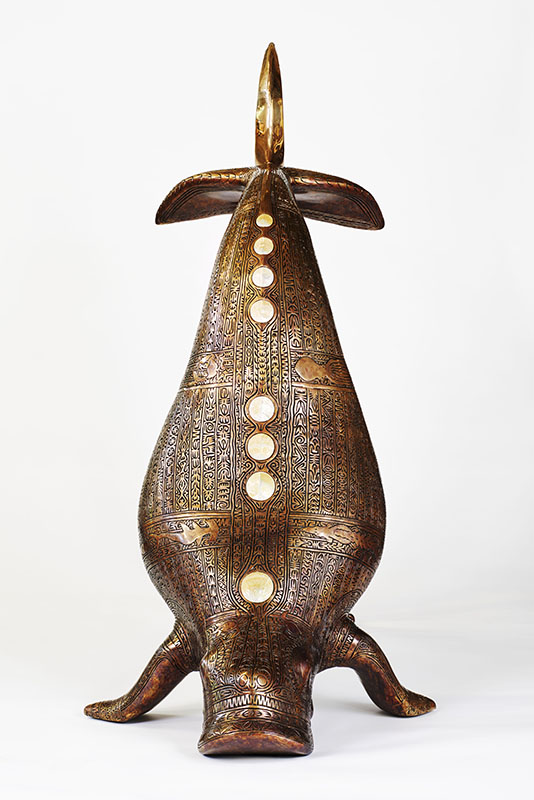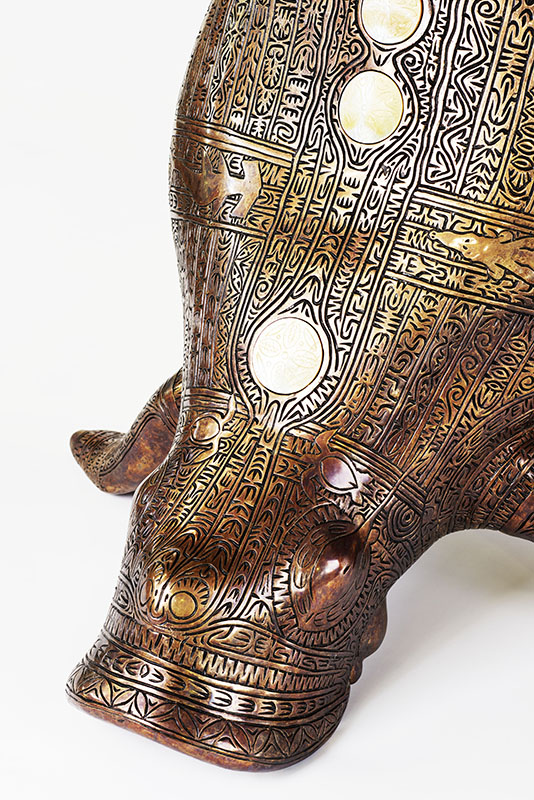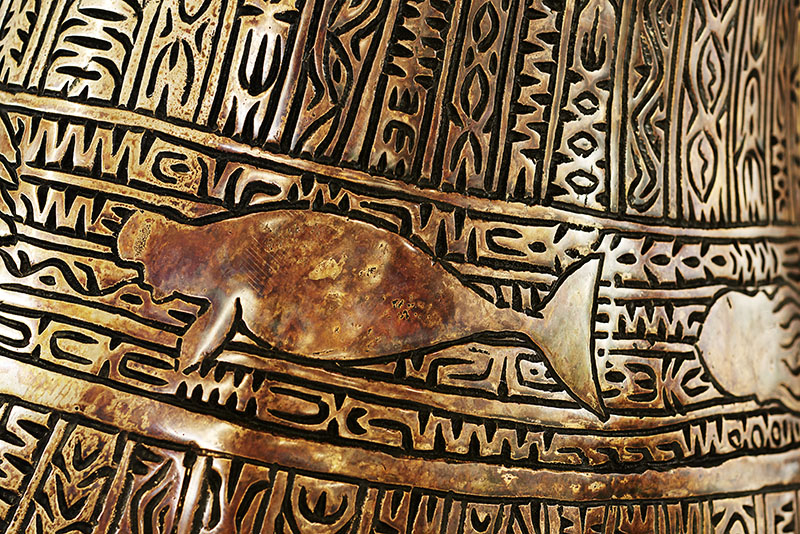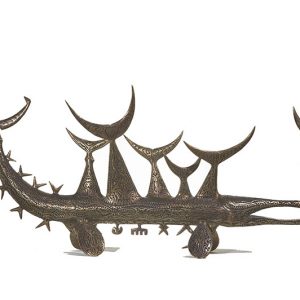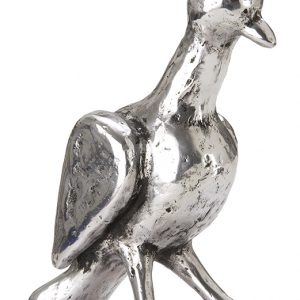Description
The work represents a dugong swimming in the moonlight.
It is in a position called San Tidayk, which is when the mammal flips its tail in order to dive down to the sea grass beds on which it grazes.
The incised patterning on the body of the dugong relates to the destruction of the sea grass beds caused mainly by large vessels which force not only dugongs from their feeding grounds but also other sea creatures such as rays, crabs and crayfish.
The raised Gapu, (suckerfish or ramora) played a significant role in the traditional hunting of Dhangal (dugong) and Waru (turtle) in the Western Torres Strait Islands. A rope made from coconut fibres was tied around the tail of the suckerfish and then released into the water where the hunters knew dugongs were feeding. The suckerfish attaches itself to the dugong, which tows the hunters in their canoe until it weakens when it was then harpooned.
The moon is called Dhangal Kisay in the artist’s language, Kala Lagaw Ya.
The patterning also represents the Torres Strait Islander’s cultural knowledge of the dugong and its habitat.
The people of the region have a very special relationship with the dugong. It is the totem of several clans, its oil is used as a traditional medicine and it is an important food source.
The sculpture was exhibited in the 2016 exhibition, ‘Australia: Defending the Oceans’,at the Oceanographic Museum of Monaco. It will also be showing at the Musée d’ethnographie de Genève, Switzerland in 2017.
Photography Roger D’Souza

